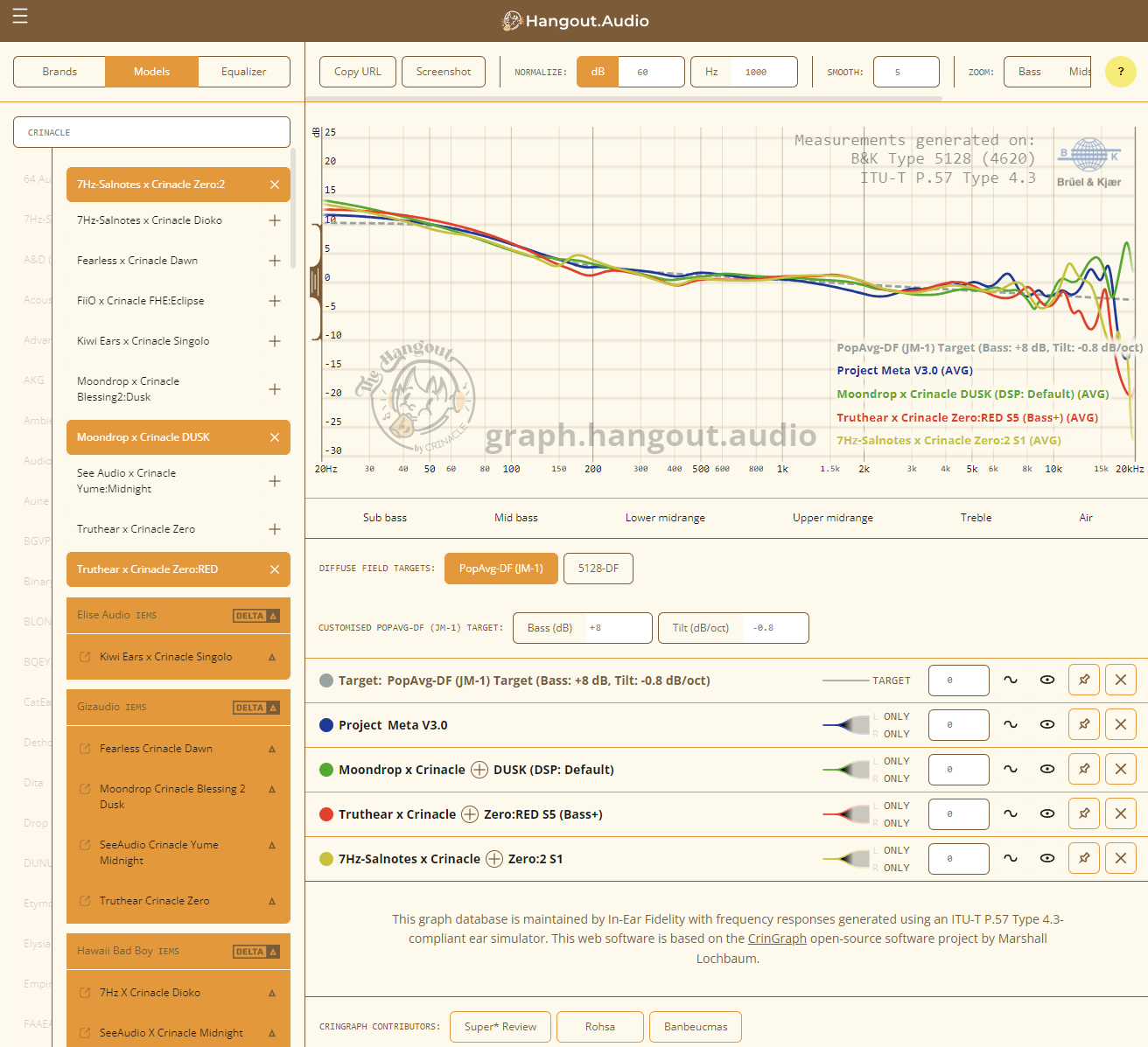Interestingly, the chart you posted shows the necessity of a sharper drop off below the peak, which mirrors my own findings in using EQ to level out my own personal resonances. It is a wonder why the Harman target does not echo this?
I think that the graph from Oksanen et al. doesn't show SPL variation at the eardrum for the test subjects, but the estimated transfer function between the inward facing microphone and the eardrum, based on a methodology proposed in the article and earlier ones from some of the same authors.
Just like Harman did a few years later, they used an inward facing microphone in the outlet port of an IEM :
You can visually represent it like this :

What they're doing is measuring the frequency response at the position of the inward facing microphone ("Mic" above). At low frequencies the SPL is going to be the same inside the "tube of air" that is formed when an IEM seals your ear canal whether it's at the driver, inward facing microphone, or eardrum position, so you can measure it directly. At higher frequencies, most importantly above 1kHz or so, that relationship breaks down : the SPL measured at the inward facing microphone no longer corresponds to the SPL at the driver or the eardrum. So have to apply transfer functions from one location to another (Gdm, Gme, Gde). Very annoyingly, that transfer function varies with fit / position / leakage or between individuals - and quite interestingly I've recently read a patent from Bose that suggests that the design of the IEM's front volume, eartip, inward facing microphone and protective mesh all play a role in determining exactly how that variation is expressed.
Oksanen at al have proposed a method to calculate the appropriate transfer function Gme for each of the test subjects, the result of these individualised transfer functions are in the graph above :
That method is a calculation, it is not a measurement nor a simulation.
@deadkrillin mentioned a
more recent article from Samsung. This one is a simulation, after validating the simulation model in a 711. Figure 9 and 10 are closer in substance to the graph from Oksanen et al above, while figure 7 and 8 are simulations of the SPL at the eardrum itself. Important to note however that the values for the eardrum impedance in the simulation model for the human ear canals was kept a constant (while it varies across individuals) - so what you're mostly looking at here in terms of inter-individual variation between the human canals is variation in ear canals' shape, including volume, geometry and length -, and they used a different set of values than the ones more recently determined
here.
I think this is an underrepresented viewpoint in many IEM reviews, unfortunately. Harman being the best publicly-available listener preference research we have doesn't mean we should ignore these very real sources of variability between listeners, these are simply questions that Harman's published IEM research—in their limited time and scope—didn't seek to answer. Unfortunately due to the IE research being unpublished for the most part, we don't have any information on how listener preferences vary in the area where anatomical/volume length variance would have the largest effects (treble).
Speaking further to the point of Harman's published work being scarce, I think it's unfortunate that Harman has a bit of a monopoly on the discussion around well-controlled and tested listener preference of insert earphones when firms like Apple probably have enough data in that regard to serve as a more statistically-significant foil to Harman's results. We'll just never see it posted or discussed publicly, unfortunately.
Indeed, and Sony, Sennheiser and Apple's IEMs all have something in common: The "target response" they aim for with their most popular TWS IEMs is meaningfully more elevated in the bass and low midrange than any of Harman's IEM targets dictates should be preferred.
Even Harman's own most-current premium TWS IEM offering (Galaxy Buds 2 Pro) deviates from the Harman IE target in this respect, shown below—normalized at a two-octave range centered at 800 Hz.
View attachment 354643
Of course, none of this changes that the results of the research are what they are, but it does kind of explain why there may be an ever-growing "anti-Harman contingent" across our community.
If the measured results of the 5128 are indeed more human-like (and there are a few papers—
including this one from Samsung—that seem to indicate this may be the case) then listeners using the Harman IE Target could be getting a more treble-focused sound signature than they would with eg. Harman's AE/OE 2018 Target. This is a bit odd to me given Harman's first published IEM study indicated that listeners preferred the opposite—a more bass-focused sound signature in their IEMs compared to AE/OE headphones.
It has less to do specifically with them aiming at a different "target response", but rather some of these IEMs having a feedback system, which will, intentionally or not, correct the response in the range where it effectively operates (and occasionally introduce errors in the transition range above, but that is another subject).
Think of it as an error control loop : the system expects a specific signal, and anything (not just noise) that isn't the signal will be seen as an "error", including a change in frequency response, for example caused by leakage, or here in the case of the 5128, a larger equivalent volume at lower frequencies (which will result, as you've observed, in a lower response in that range). Not all feedback control loops are created equal though, and some IEMs will perform better than others in terms of delivering a stable SPL across individuals and fit.
This also means that, generally speaking, these IEMs will have an inconsistent transfer function between 711 and 5128 measurements (and in all likelihood your own ears) compared to passive ones.
The inconsistent Gdm, Gme and Gde transfer functions mentioned above is one of the reasons why until recently the feedback control loop was limited to operating at lower frequencies, but Bose's CustomTune technology seems to be a genuine breakthrough that allows them to operate it up to several kHz without (presumably) introducing significant errors in terms of FR and noise reduction.
apparently the IE study didn't let them adjust treble preferences to begin with.
In an unpublished study some listeners were able to adjust both the bass and treble response :
AES E-Library ← Back to search

www.aes.org
But if the Q / frequency / magnitude of the filters they could play with was similar to the earlier articles, I think that no combination available would be able to compensate for how 711 couplers tend to deviate from the average ear canal impedance.
That is, find measurements of both the target IEM and your listening IEM (ideally 5128), calculate the response difference, and apply the difference as EQ to your music.
With active IEMs in particular I'd recommend being a bit careful about doing that, or at least not take it too much at face value. A simple example : this is the difference between the Truthear Zero Red, Anker A40 (ANC on), and the Bose QC Ultra, measured in the regular canal extension of a 711 coupler (compensated flat), and one longer by 5,1mm, normalised at 500Hz :
To be noted is that the CustomTune calibration was performed before running the sweeps in each canal extension. I've greyed out the 5kHz+ region because I'd prefer people to focus on what is happening lower and other variables pile up in that range.
If, let's say, the A40 and QC Ultra were EQed to the same target based on the measurements done in the regular canal extension, ceteris paribus, someone with longer ear canals would genuinely get an audibly different SPL at the eardrum. And we're only talking about canal length here, not other variables.
And what is Bose doing here ? Something I think quite clever and deliberate.
In future I expect there will be a single target as Amir and many of us hope for, but there will be a methodology for compensating for individual in-ear differences.
I rather expect more and more active IEMs to individualise their output. A company like Bose already is, in regards to their IEMs, in a post "single target on a single ear simulator" world, and if you want to know whether or not they've been doing a good job, you'll probably need something in the vein of a set of different ear simulators representative of a larger population, know what the response ought to be for each on of them, and see whether or not their earbuds come closer to these individualised target(s) or not.



